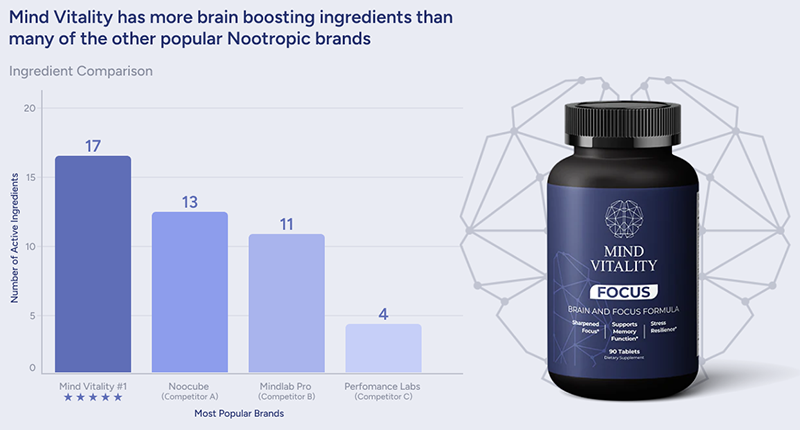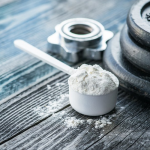Amino acids are best known for their very important role in serving as the building blocks of proteins. A lesser known fact about amino acids is that each exists in two forms, referred to as L- and D- amino acids. Most people are familiar with the L- forms, such as L-tryptophan, but aren’t as familiar with the D- forms. That’s primarily because the human body is adapted to make much greater use of L- form amino acids.
One of the few exceptions in regards to the body’s use of D-amino acids is D-aspartic acid. In humans, D-aspartic acid contributes to the production and release of hormones — testosterone in particular. This has made D-aspartic acid a popular ingredient in both bodybuilding supplements and male libido enhancement supplements.
The following are answers to many of the most common questions asked about the the amino acid D-aspartic acid.
Contents
- What Is the Difference Between L-Amino Acids and D-Amino Acids?
- What Is Aspartic Acid?
- What Is the Difference Between L-Aspartic Acid and D-Aspartic Acid?
- Where Does D-Aspartic Acid Come From?
- Are There Foods With D Aspartic Acid?
- Does D-Aspartic Acid Increase Testosterone?
- Does D-Aspartic Acid Treat Erectile Dysfunction (ED)?
- Does D-Aspartic Acid Increase Libido (Sex Drive)?
- Does D-Aspartic Acid Increase Sperm Count?
- Does D-Aspartic Acid Increase Muscle Mass (Is It Helpful for Bodybuilding)?
- Is DAA a Steroid?
- Is D-Aspartic Acid a Banned Substance?
- What Is the Dosage of D-Aspartic Acid?
- Are There D-Aspartic Acid Side Effects? Is D-Aspartic Acid Safe?
What Is the Difference Between L-Amino Acids and D-Amino Acids?
Almost every type of amino acid exists in two forms, called L-amino acids and D-amino acids. The two forms of any one amino acid have the same chemical formula, but their molecular arrangements are mirror images of one another. This is why the L- and D- forms of an amino acid are sometimes referred to as left-handed or right-handed.
We’re most familiar with the L-amino acid forms because the human body primarily uses L-amino acids. In fact, until fairly recently it was believed that D-amino acids were essentially useless to human life.
The L-amino forms are so prevalent that they’re often written without being prefaced with L-. For example, you’ve certainly read about the common amino acids L-glutamine, L-tryptophan, and L-arginine. But there’s a good chance in your readings they were discussed as glutamine, tryptophan, and arginine. It’s not necessary to include the L- because it’s simply implied that this is the form being discussed.

L-amino acids are used by cells to produce proteins. L-amino acids occur in all proteins produced by animals, fungi, plants, and bacteria. Because L-amino acids are the building blocks of proteins, and D-amino acids do not play a role in protein formation, it’s been assumed that D-amino acids were of no significant use in humans. While L-amino acids are indeed far more important in humans, and required for human life, research is determining that a few D-amino acids to play some roles in human health — they just don’t contribute to proteins. In particular, the D- form of aspartic acid has come to be accepted as having a role in hormone production.
What Is Aspartic Acid?
Aspartic acid is an amino acid. Like almost all amino acids, aspartic acid exists in both L and D forms: L-aspartic acid and D-aspartic acid (also called DAA).
What Is the Difference Between L-Aspartic Acid and D-Aspartic Acid?
L-Aspartic acid is an amino acid that is involved in the metabolism of proteins. D-aspartic acid is a non-essential amino acid that is involved in the synthesis and release of testosterone in the body. So unlike L-aspartic acid which is a building block for proteins, D-aspartic acid doesn’t have a role in proteins but instead acts to produce and release certain hormones.
Where Does D-Aspartic Acid Come From?
D-aspartic acid is a naturally occurring amino acid. It is found in many foods, including meat, poultry, fish, and dairy products. D-aspartic acid also is produced in the pituitary gland (a small gland located underneath the brain) of males and females, and in the testes of males.
Are There Foods With D Aspartic Acid?
Some natural sources of D-aspartic acid include animal foods such as beef, lamb, and poultry. A few vegetables, including avocado, asparagus, and corn contain DAA. Dairy products, such as milk and cheese, also contain small amounts of D-aspartic acid.
Does D-Aspartic Acid Increase Testosterone?
D-aspartic acid is an amino acid that has been shown to increase testosterone levels in some studies. DAA encourages the production of luteinizing hormones, or LH. Increased levels of LH in turn causes the body to produce more testosterone.
In addition to encouraging the pituitary gland to release luteinizing hormone, which increases testosterone production, DAA is also formed in the testicles, which leads to an overall increase in testosterone levels throughout the body.
Does D-Aspartic Acid Treat Erectile Dysfunction (ED)?
Because D-aspartic acid, or DAA, can increase testosterone levels in some men, it is believed by some that DAA can be a treatment for erectile dysfunction (ED). This hasn’t been proven, and it’s a questionable claim because many cases of ED don’t involve low levels of testosterone.
The relationship between ED and testosterone is not clear, and many people with normal testosterone levels still have ED. Many men with ED have decreased blood flow to the penis — a condition that increased testosterone does not impact. Additionally, some cases of ED involve psychological factors, such as anxiety, relationship problems, or depression, and there is no evidence that testosterone treats any of these issues.
Does D-Aspartic Acid Increase Libido (Sex Drive)?
While it is unlikely that D-aspartic acid can treat ED, it may increase libido — the drive, or desire, to have sex. Testosterone is key to male libido — in fact testosterone therapy is a very common means of improving sex drive and sexual satisfaction in men experiencing low libido. Because DAA increases testosterone, taking DAA supplements can work to enhance libido.
Does D-Aspartic Acid Increase Sperm Count?
Supplementing with DAA has been shown to significantly increase sperm volume (amount of sperm) and sperm motility (ability of sperm to move). One study that involved men with fertility problems showed that supplementing with D-aspartic acid for three months doubled sperm concentration and boosted sperm motility by 50%.
Does D-Aspartic Acid Increase Muscle Mass (Is It Helpful for Bodybuilding)?
Testosterone levels are one of the primary factors in muscle growth and strength. Because D-aspartic acid increases testosterone levels, it can increase muscle mass. In fact, DAA supplements are common in the bodybuilding world. In addition to increasing testosterone, DAA can improve energy levels, which can lead to improved exercise endurance and more productive workouts.
Is DAA a Steroid?
D-aspartic acid is not a steroid. Because DAA can increase testosterone and therefore increase muscle mass in people who work out, some people mistakenly associate DAA with steroids. DAA is an amino acid, not a steroid.
Is D-Aspartic Acid a Banned Substance?
Related to the mistaken belief that DAA is a steroid comes the mistaken belief that DAA might be banned. D-aspartic acid is not listed as a banned substance in sports. DAA has been included in many nutritional supplements for many years, and it is not classified as a prohibited substance by the World Anti-Doping Association. That means DAA supplements can be taken by athletes, and that it isn’t banned by the military.
What Is the Dosage of D-Aspartic Acid?
There is no agreed upon dosage of D-aspartic Acid. However, many studies have used a dosage of 3 grams per day.
Are There D-Aspartic Acid Side Effects? Is D-Aspartic Acid Safe?
Currently, no adverse health effects have been reported from people who have taken the recommended dosage of DAA.






